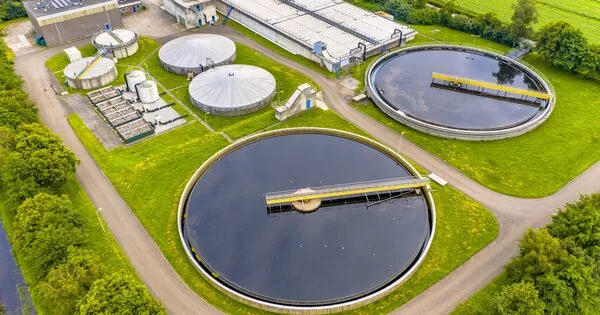Wastewater treatment, also known as sewage treatment, is the process of removing impurities from wastewater or sewage before it reaches aquifers or natural bodies of water such as rivers, lakes, estuaries, and oceans. Because pure water does not exist in nature (i.e., outside of chemical laboratories), any distinction between clean and polluted water is based on the type and concentration of impurities found in the water, as well as its intended use.
Treating polluted water typically involves removing harmful contaminants and pollutants to make it safe for human consumption or safe for the environment. The specific methods used for treating polluted water depend on the type and level of pollutants present in the water, as well as the intended use of the treated water. Here are some common methods used for treating polluted water:
- Physical Treatment: This involves removing pollutants through physical processes such as sedimentation, filtration, and adsorption. Sedimentation involves allowing the polluted water to sit still, so that the heavier contaminants can settle to the bottom. Filtration involves passing the water through a physical filter, which removes suspended particles. Adsorption involves passing the water through a material that adsorbs contaminants onto its surface.
- Chemical Treatment: This involves adding chemicals to the polluted water to remove or neutralize contaminants. Examples of chemicals used for water treatment include chlorine, ozone, and hydrogen peroxide. Chemical treatment can also involve using activated carbon to remove organic contaminants.
- Biological Treatment: This involves using microorganisms to remove pollutants from water. Examples of biological treatment include using bacteria to break down organic contaminants, or using plants to remove nutrients from wastewater.
- Reverse Osmosis: This is a process that involves passing water through a semi-permeable membrane to remove contaminants. Reverse osmosis is effective for removing salts, minerals, and other dissolved solids.
- Distillation: This involves boiling water to create steam, which is then condensed to remove contaminants. Distillation is effective for removing dissolved solids and other contaminants that have a high boiling point.
Overall, the most effective method for treating polluted water will depend on the specific contaminants present in the water, as well as the intended use of the treated water. It is important to consult with a water treatment professional to determine the best treatment method for your specific situation.
















